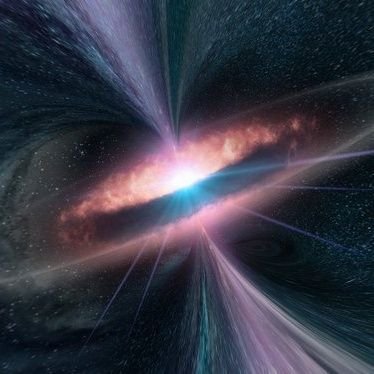Explore tweets tagged as #cosmoknowledge
The European ExoMars Trace Gas Orbiter has captured rare images of the interstellar comet 3I/ATLAS as it sped past Mars at a distance of about 19 million miles. This ancient visitor, believed to have formed before our solar system, displayed a faint glowing coma as it crossed the
1
0
2
China’s Tianwen-2 spacecraft captured a stunning selfie with Earth as it began its journey to the near-Earth asteroid 2016 HO3, also known as Kamoʻoalewa.
0
0
1
NASA’s Perseverance rover has discovered iron phosphate and sulfide minerals like vivianite and greigite in a Martian rock, alongside organic carbon, phosphorus, and sulfur. These compounds typically form through redox reactions—chemical processes that sustain life on Earth.
1
3
35
An 18-year-old high school student, Matteo Paz from Pasadena, stunned the astronomy world by using artificial intelligence to scan NASA’s NEOWISE data and uncover about 1.5 million previously unknown cosmic objects.
0
0
2
Undergraduate students have successfully launched and deployed their own experimental applications aboard a geosynchronous satellite. The project demonstrates how university teams can directly test new space technologies in real orbital conditions, marking a milestone for
1
0
1
A 24-year-old is preparing to leave Earth forever to live on Mars.
0
0
2
Why Is Space Black? 🤔 Credit: Cosmoknowledge
0
5
18
Meet Luca, the Common Ancestor of All Living Forms on Our Planet. Credit Video: Cosmoknowledge
0
2
8
Russia is preparing to send its own artificial intelligence system, GigaChat, to the International Space Station.
0
0
1
Researchers discovered that spores of the heat-resistant bacterium Bacillus subtilis survived temperatures over 1,000°C during a rocket’s re-entry through Earth’s atmosphere. The experiment shows that some microbes can endure extreme space conditions, supporting the theory that
1
0
2
A new warp drive model might have just changed everything. A team of physicists from Applied Physics, led by Dr. Alexey Bobrick and Dr. Gianni Martire, has developed a model that could make faster-than-light travel physically possible. Let’s break it down 👇
1
0
0
Scientists describe the ultraview effect as a deep shift in perception that occurs when astronauts gaze into the vastness of space rather than toward Earth. Unlike the overview effect, which inspires unity with our planet, the ultraview effect evokes awe, humility, and
1
0
0
Scientists studying Mars rover data have found complex organic molecules in Martian rocks, considered the strongest potential biosignatures yet. While not proof of life, this discovery greatly strengthens the case that Mars may once have hosted microbial organisms.
1
0
3
Nitrogen ninja galaxy defies dawn of time! 🌌🤯 Your wild theory on MOMZ14's star secrets? Via cosmoknowledge
2
0
2
Good Night to Everyone 🌌 Why Is Space Black? 🤔 Credit: Cosmoknowledge
0
0
6
LUCA, the Last Universal Common Ancestor, is the ancient microbe from which all modern life on Earth descends.
0
0
2


